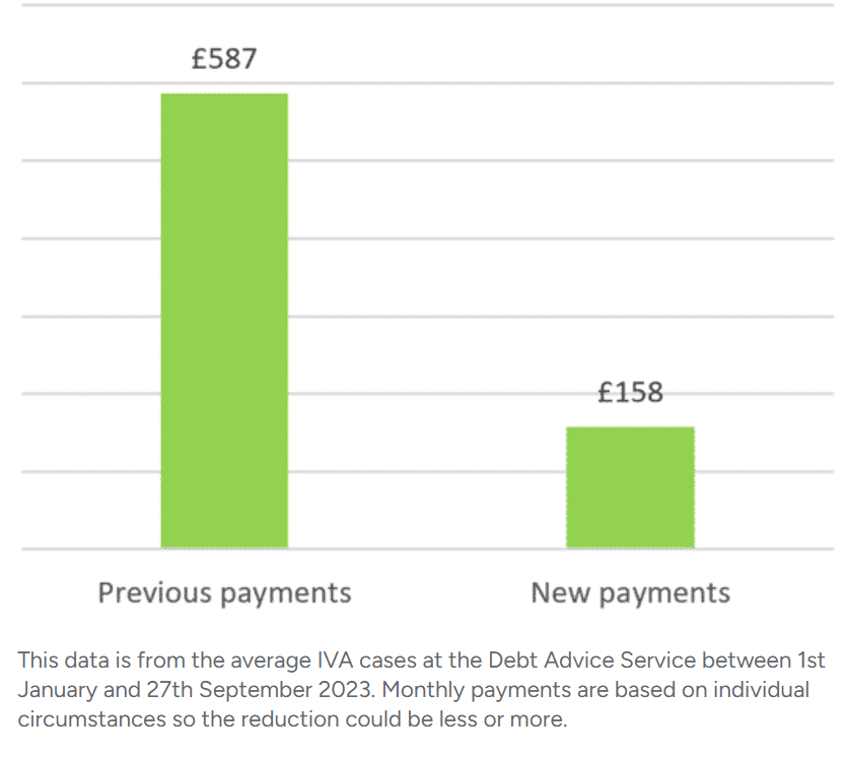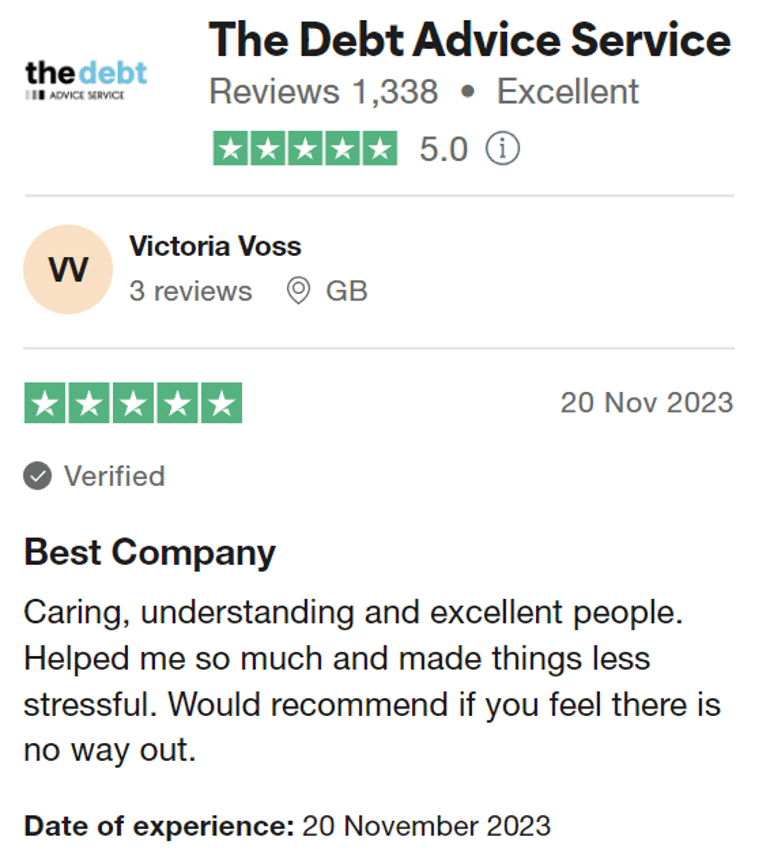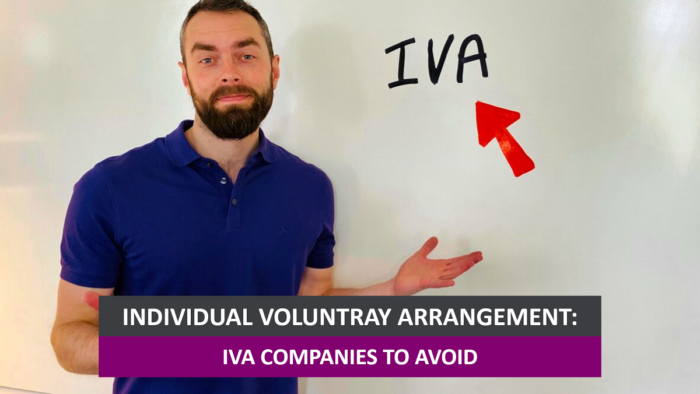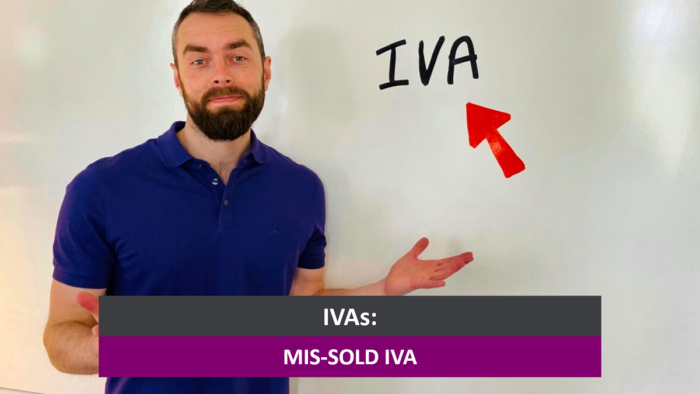For free & impartial money advice you can visit MoneyHelper. We work with The Debt Advice Service who provide information about your options. This isn’t a full fact-find, some debt solutions may not be suitable in all circumstances, ongoing fees might apply & your credit rating may be affected.
Are you in debt and want to learn about an Individual Voluntary Arrangement (IVA)? You’re in the right place! Our ultimate guide will answer all your questions.
We know that dealing with debt can be confusing and tough. That’s why, in this simple, easy guide, we’ll cover:
- What is an Individual Voluntary Arrangement (IVA)?
- How does an IVA work to help with debts?
- How long does an IVA last?
- What happens at the end of an IVA?
- Can you write off some debt with an IVA?
Each month, over 170,000 people just like you visit our website looking for guidance on debt solutions; you’re not alone. We understand your worries about paying off debt, and we’re here to help you figure things out.
What is an Individual Voluntary Arrangement (IVA)?
An Individual Voluntary Arrangement is a legally-binding insolvency solution to manage debts.
It involves an agreement between you and your creditors to make a monthly payment – which is affordable to you – for a fixed period. It is used when you cannot afford to repay all existing debts within a reasonable time.
Your creditors cannot end the agreement, but neither can you. However, creditors can petition for the failure of the IVA, especially if they believe you’re not meeting the terms that have been agreed upon. IVAs cost money to set up and you can be made bankrupt if your IVA fails.
Don’t worry, here’s what to do!
There are several debt solutions in the UK, choosing the right one for you could write off some of your unaffordable debt, but the wrong one may be expensive and drawn out.
Fill out the 5 step form to find out more.
What do Individual Voluntary Arrangements do?
An Individual Voluntary Arrangement commits you to make affordable monthly repayments for five or six years.
Your debt repayment plan is based on your disposable income after essentials have been paid for. The payment will be divided between creditors in proportion to the amount of debt you each of them.
At the end of your repayment period, all remaining unsecured debt is written off, so you’ll become debt free.
An IVA only covers certain types of debts, so you’ll need to check which debts are included in yours. If you have debts, like student loans, that aren’t included in your IVA, you will need to find other solutions to clear those debts.
To qualify for an Individual Voluntary Arrangement, you need to prove to creditors that you cannot afford to repay all your debts as expected within a reasonable time. Creditors that are owed at least 75% of the total debt must approve the IVA for it to go ahead.
You also need to prove that the total debt you owe is more than the value of any assets you own, including your home equity if you’re a homeowner.
How long does an Individual Voluntary Arrangement last?
A standard Individual Voluntary Arrangement will last for five or six years. At the end of the fifth year, the IVA can be extended for a sixth year in some situations.
» TAKE ACTION NOW: Fill out the short debt form
What happens at the end of an IVA?
At the end of an IVA, you might have to release equity from your home or make monthly payments for another year.
If you’re not a homeowner and you complete your IVA, you’ll be asked to make another year of monthly repayments and then all unsecured debts will be written off.
But if you’re a homeowner, you will be asked to try and release equity from your home by remortgaging. If this is possible, you will then have to use the released equity to pay off as much of the remaining debt as possible.
If it’s not possible, you will have the option of making a lump sum payment to end the IVA. Or you will need to extend the IVA for a sixth year. After the sixth year of repayments, all unsecured debt is wiped and you become free from the IVA and your debts.
What is the IVA Register?
The IVA register is an informal name for the Individual Insolvency Register, which includes a public record of people who are using an IVA to get out of debt.
It’s unlikely that anyone you know will use the IVA register, such as friends or employers. It’s mostly used by credit reference agencies and lenders, but it is a public record that anyone can access.
Learn more about how the IVA register works in our IVA publication guide.
Will an IVA affect my personal life?
In some cases, an IVA can affect your current or future employment opportunities, especially if you work in legal or financial services where financial stability is essential.
Not only that but having an IVA could affect any future income or assets. If you sell your home during an IVA, the money you make as a profit from the sale might have to be paid into your IVA.
You also have to declare any income raises when you’re in an IVA.
What are IVA Companies?
IVA companies are commercial businesses that help debtors to convince creditors to agree to an IVA and then set up the IVA. They also manage the IVA repayments.
An IVA cannot be set up by yourself. A professional must arrange it called an Insolvency Practitioner (IP). An IP will:
- Offer professional advice and support
- Negotiates with creditors
- Report back to creditors on the progress of the insolvency
Some IVA companies have an in-house IP to be able to offer these services. Some IVA companies use external IPs, but the role is still the same. As IVA companies are commercial businesses, they charge to set up your IVA and charge ongoing costs, which are taken from your monthly repayment rather than paid separately.
If you’re considering an IVA, it’s essential you know more about IVA companies and how they work, which you can do on our dedicated IVA company explanation page.
How long does an IVA take to set up?
It takes around six weeks on average to get creditors to agree to an IVA and have it set up.
You can learn about the six steps to setting up an IVA with MoneyNerd. These steps will also bring to light the possible reasons why your IVA could be delayed.
Why do people use an IVA?
People use an IVA because:
- It creates a pathway out of unmanageable debt
- You only have to make affordable repayments
- Service fees are paid from your monthly repayment – not as an extra expense
- Unsecured debts might be written off at the end of the IVA
- It allows people in debt to gain more financial freedom once the IVA is cleared.
What are the disadvantages of an Individual Voluntary Arrangement?
The drawbacks of using an IVA are:
- Homeowners will have to try and remortgage to access equity and pay off as much remaining debt as possible at the end of the first five years.
- A failed IVA can result in creditors applying to make you bankrupt
- Creditors might not agree to an IVA
- Your credit score will be negatively affected
For more information, read our popular Risks of an IVA post.
Is an IVA a good idea?
An IVA can be a suitable and advantageous debt solution for some people, but it might not be the best option available to you. The only way to know if it would be a good idea or not is to get sound debt advice.
There are many alternatives to an IVA such as a Debt Relief Order, Bankruptcy, or a Debt Management Plan.
Free debt advice is available from charities like StepChange!
How a debt solution could help
Some debt solutions can:
- Stop nasty calls from creditors
- Freeze interest and charges
- Reduce your monthly payments
A few debt solutions can even result in writing off some of your debt.
Here’s an example:
Situation
| Monthly income | £2,504 |
| Monthly expenses | £2,345 |
| Total debt | £32,049 |
Monthly debt repayments
| Before | £587 |
| After | £158 |
£429 reduction in monthly payments
If you want to learn what debt solutions are available to you, click the button below to get started.
Can I pay my IVA off Early?
Yes, it’s possible to pay off your IVA before the first five years are up. But this may not be advisable in some scenarios.
Uncover the advantages and disadvantages of paying off an IVA early in our Can I Pay My IVA Offer Early? guide.
Loans for people with an IVA
It’s not impossible to get a loan while on an IVA, but any loan will be limited and you may be subject to an eye-watering interest rate. This topic has been discussed in detail in our IVA and loans guide.
Can you get a mortgage while on an IVA?
Getting a mortgage while on an IVA can be extremely difficult. Lenders are not usually willing to lend significant sums to people on an IVA, especially when they know that the homeowner may have to remortgage at the end of the first five years.
Not only that, you will need to get the approval of your IVA supervisor, making the process even harder.
For finer details and an in-depth explanation, consider reading our IVA and mortgages page.
Thousands have already tackled their debt
Every day our partners, The Debt Advice Service, help people find out whether they can lower their repayments and finally tackle or write off some of their debt.

Natasha
I’d recommend this firm to anyone struggling with debt – my mind has been put to rest, all is getting sorted.
Reviews shown are for The Debt Advice Service.
Can you get approved for credit after an IVA?
You can get approved for credit after your IVA has finished, but your credit score won’t immediately recover from the IVA so you will still face some difficulties.
Learn the details on our dedicated page explaining credit after an IVA and how to improve your chances.
Is an IVA Worth it?
An IVA can be a worthwhile debt solution for some people, ensuring they get out of debt in reasonable time and potentially writing off some of their debt in the end.
But not everyone should use an IVA.
Sometimes an IVA might go completely wrong and off track. This could be because it wasn’t the right debt solution, or you might have been mis-sold the IVA in the first place.
Speak with a debt charity to work out whether an IVA is the best debt solution for you, and read our Is an IVA Worth It? post for more information.
Can an IVA stop a CCJ?
An IVA could stop a creditor from taking legal action against you to get back its money via a CCJ.
An IVA will stop creditors taking further action to recover the debt because they will be included in the IVA agreement, sometimes even when they didn’t want to accept.
If you start getting communications from creditors asking for payment after the IVA was set up, or if you get legal threats, you should inform your IVA supervisor immediately.
IVA rejected – what now?
Sometimes creditors don’t agree with the repayments proposed in the IVA and your IVA will be rejected
Don’t worry if this happens, there are many debt solutions that can help people get out of their debt nightmare. A debt charity will re-assess your suitability for other solutions. Get a head start by reading about the most popular IVA alternatives on our debt solution page.



